Civil War field hospital testifies to human cost of Battle of Gettysburg
Restored George Spangler Farm tells grim stories of Gettysburg dead and wounded
488 Blacksmith Shop Rd, Gettysburg
The moment
The expansive George Spangler farm was near the battlefield in Gettysburg. And it had a large barn, one of those big bank barns so familiar to Pennsylvania residents. So inevitably in a battle in which so many soldiers from both sides were wounded, it would be pressed into service as a field hospital.
Ron Kirkwood, who wrote the book on the Spangler farm and family’s role in those days during and after the battle in the summer of 1863, explains here in a guest column the meaning and significance of this hallowed ground.
For Kirkwood, the battlefield and the farm represent a paradox, perhaps familiar with many who visit Gettysburg: “The sense of wonder and awe that I feel on that battlefield is understandable, but I’m still trying to figure out the calm and peace that I feel where so many horrible things happened.”
Kirkwood now tells the story about this quiet farm, a place that became “Too Much for Human Endurance”:
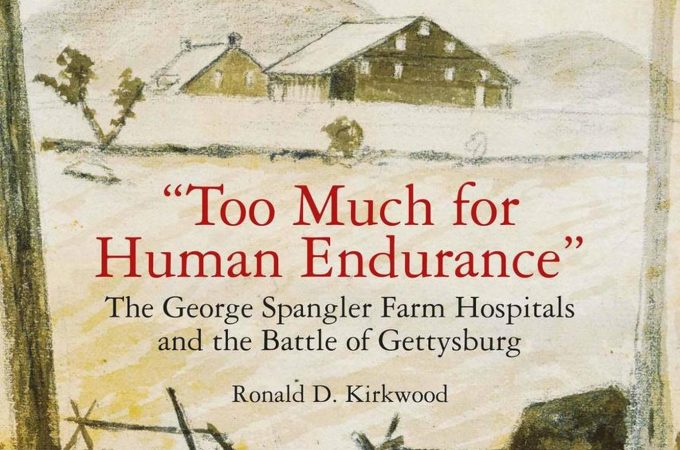
The Spangler Farm
York County is dotted with big, beautiful Pennsylvania bank barns like the one owned by George and Elizabeth Spangler just south of Gettysburg in 1863. The battlefield still has many today, too, with their overhanging forebay in the front and bank on the side or back leading up to the barn’s top floor.
This is how German and Swiss immigrants and their descendants built their barns in the 1700s and 1800s in what would become York County and Adams County.
Some might consider these barns works of art, but more importantly they were practical then and practical still today. Most face southeast for morning warmth for the animals in the bottom-floor stable and the bank allows the farmer to drive his wagon directly to the barn’s upper level for loading and unloading. Most have open wagon sheds for storage and repairs and a corn crib attached. A farmer can get a lot accomplished in an easier manner with a Pennsylvania bank barn, and their heyday popularity stretched from their heart here in south-central and eastern Pennsylvania to through Maryland and into Virginia.
But most of all, they were just so big. A Cincinnati reporter covering the Battle of Gettysburg called these expansive barns “great horse palaces.” A Confederate soldier arriving in Pennsylvania called the barns “immense” and the houses “small” and “inconvenient.”
Surgeons from both armies noticed this, too, and dozens of barns and farms were swallowed up by both armies for hospitals during and after the Battle of Gettysburg. And George and Elizabeth Spangler had one of the biggest farms and biggest hospitals.
XI Corps medical staffers took control of the Spanglers’ land directly behind the growing and evolving Army of the Potomac line mid-afternoon July 1 and banished George and Elizabeth and their four children ages 14 to 21 out of the way to one upstairs bedroom of their house. Wounded began to arrive by 4 p.m. from XI Corps fighting north of town and in town.
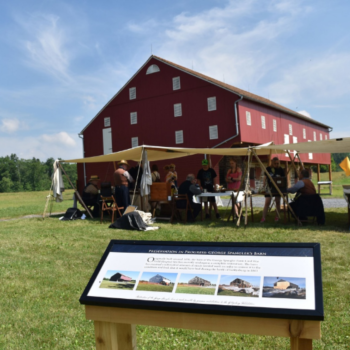
“The wounded soon began to pour in, giving us such sufficient occupation that from the 1st of July till the afternoon of the fifth, I was not absent from the hospital more than once and then but for an hour or two,” said 26-year-old Dr. Daniel G. Brinton, surgeon-in-chief, Second Division, XI Corps, U.S. Volunteers. “Very hard work it was, too, & little sleep fell to our share. Four operating tables were going night and day. Many of them were hurt in the most shocking manner by shells. My experience at Chancellorsville was nothing compared to this & and I never wish to see such another sight. For myself, I think I never was more exhausted.”
A Spangler surgeon who was approaching total exhaustion called the work “too much for human endurance.”
The hospital would use almost every inch of that Pennsylvania bank barn. Dr. Brinton estimated that 500 wounded and dying men filled it. A hospital worker guessed 400. Men were crammed so closely together that they passed deadly infectious diseases such as typhoid fever to one another. Many men died of these diseases rather than the battle wound that brought them to the hospital.
Pvt. Reuben Ruch, age 19 of the Easton area, 153rd Pennsylvania, said: “This barn was full of wounded men from one end to the other. Where there was room for a man you could find one. The hay mows, the feed room, the cow stable, the horse stable and loft.”

The hospital grew to about 1,900 wounded on July 4-5 after the Confederates retreated and it was safe for ambulances to search on and around the battlefield for wounded men left behind. Even though the hospital served the XI Corps and its 26 regiments at Gettysburg, it hosted Confederate and Union wounded and men from more than 50 regiments altogether. Many Confederates were placed in the barn’s wagon shed to separate them from the Army of the Potomac wounded.
The barn and other outbuildings quickly filled, so men were then placed in the open because not enough tents were provided after the battle.
Cpl. William Kiefer, 153rd Pennsylvania, said: “Hundreds were lying with but feeble, or in most cases with no shelter, exposed to a cold incessant rain against the sides of the barn, and in an orchard adjoining the sheds. Their moans were heard in every direction, and with a lantern I moved about from one to another during the long hours of the night. I … searched in vain for blankets to cover the suffering and dying.”
Pvt. Henry Blakeman of the 17th Connecticut said: “We saw pretty hard times lying on the ground. … I was wet through and had not half enough to eat. I wore the same shirt that I was wounded in all bloody for nine days and half that time it was full of maggots & I wore the same pants.”
Surgeries and amputations took place under the forebay of the Spanglers’ barn, a 7-foot extension that allowed for more storage in the top floor. You can drive through York County’s rural areas for high-quality examples of these barns and their forebays. Under the Spangler forebay, doctors had more light and fresh air away from the smells of infections, body fluids and human feces inside the barn. It also was safer for anesthesia use at night when lanterns were burning.
“At the doorway I saw a huge stack of amputated arms and legs, a stack as high as my head!” said Pvt. William Southerton, age 21, 75th Ohio. “The most horrible thing I ever saw in my life! I wish I had never seen it! I sickened.”
Wounded Pvt. Justus Silliman of the 17th Connecticut said, “The barn more resembled a butcher shop than any other institution. One citizen on going near it fainted away and had to be carried off.”
The Spanglers’ separate summer kitchen building and small house were reserved for high-priority patients. Confederate Brig. Gen. Lewis A. Armistead died in the summer kitchen on July 5, two days after he was mortally wounded while leading his men across the wall at the end of Pickett’s Charge. Army of the Potomac Capt. Frederick Stowe was the son of author Harriet Beecher Stowe of “Uncle Tom’s Cabin” fame, and he was Armistead’s roommate in the building. Stowe lived.
Army of the Potomac Brig. Gen. Francis Barlow was treated in the Spanglers’ house. Col. Eliakim Sherrill of the 126th New York and Col. Francis Mahler of the 75th Pennsylvania died in the Spanglers’ house.
Assistant Surgeon William S. Moore of the 61st Ohio died at Spangler. Amazingly, he was the only Army of the Potomac surgeon or assistant surgeon to die at Gettysburg. Pvt. George Nixon of the 73rd Ohio died at Spangler. He would become the great-grandfather of President Richard M. Nixon.
The six Spanglers used that upstairs bedroom as their residence for the entire five weeks and two days that their property was occupied. There they lived amid the wounded and dying in their house, the flies, the chamber pot, the summer heat and the smells. A neighboring family that also unwillingly hosted a hospital moved away and stayed away because the smells in the house made them sick.
The Spanglers got their farm back on Aug. 7 after all of the wounded were shipped off to Camp Letterman near Gettysburg and general hospitals in bigger cities such as York, Baltimore and Philadelphia. Penn Park in downtown York hosted thousands of wounded and diseased soldiers during the Civil War.
Like so many other Spanglers in south-central Pennsylvania, George Spangler and his four children were descended from four Spangler brothers who left the Baden area of what is now Germany and arrived in Philadelphia in the early 1700s. The Spangler clan has spread far and wide since then, but early on many settled in the yet-to-be-formed York County, especially in the area of what is now the York Airport in modern Jackson Township. At one point so many Spanglers lived there that it was known as Spangler Valley.
George and Elizabeth Spangler’s family must have been a hearty lot. They didn’t write about the horror that they had survived. Instead, they just got about the work of rebuilding their farm and their lives.
The Spanglers filed three damage claims totaling about $5,000 but received only $90 for six tons of hay. The U.S. quartermaster’s agent said: “The Government of the United States is no more responsible for bringing on the battle fought there than it would have been had a tornado passed over that country causing as wide spread destruction as did that terrible engagement. … That battle and hospital damage was his misfortune.”
The Spanglers’ children sold the farm after their parents died in the early 1900s. It fell into disarray after many decades and many owners by the time the Gettysburg Foundation came to the rescue and purchased the 80 acres that was left of the property in 2008 for almost $2 million.
The Foundation restored the barn, summer kitchen and smokehouse with great attention to historic detail, right down to the horse hair in the mortar. If you want to know what 1863 looked like, those buildings are your evidence inside and out. Most of the wood inside the barn is the same wood that wounded and dying men lay on and next to in 1863. The Spanglers’ house has been expanded and turned into offices and a modern education center.
The Gettysburg Foundation now opens the farm for visitation and programs on weekends in June, July and August. The big, beautiful Pennsylvania bank barn stands tall and striking as you drive down the lane toward it, ready to reveal its horrifying but important 1863 stories.
We are fortunate to have such a historic Civil War hospital site fully recovered and available to us just one county over.
Photo credits: Top photo, Kinsley Construction; Second photo from top, YDR; Third photo from top, Gettysburg Foundation.

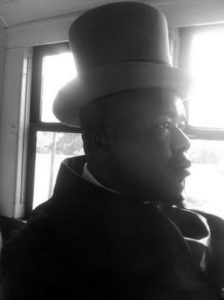
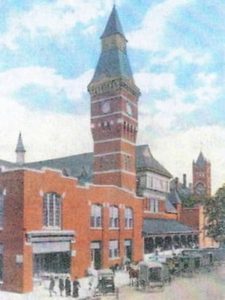
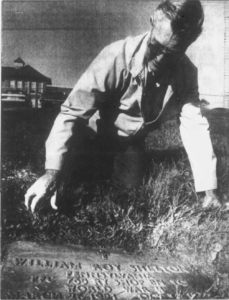
Pingback: Gettysburg's Spangler Farm: Stories of the dying - Witnessing York